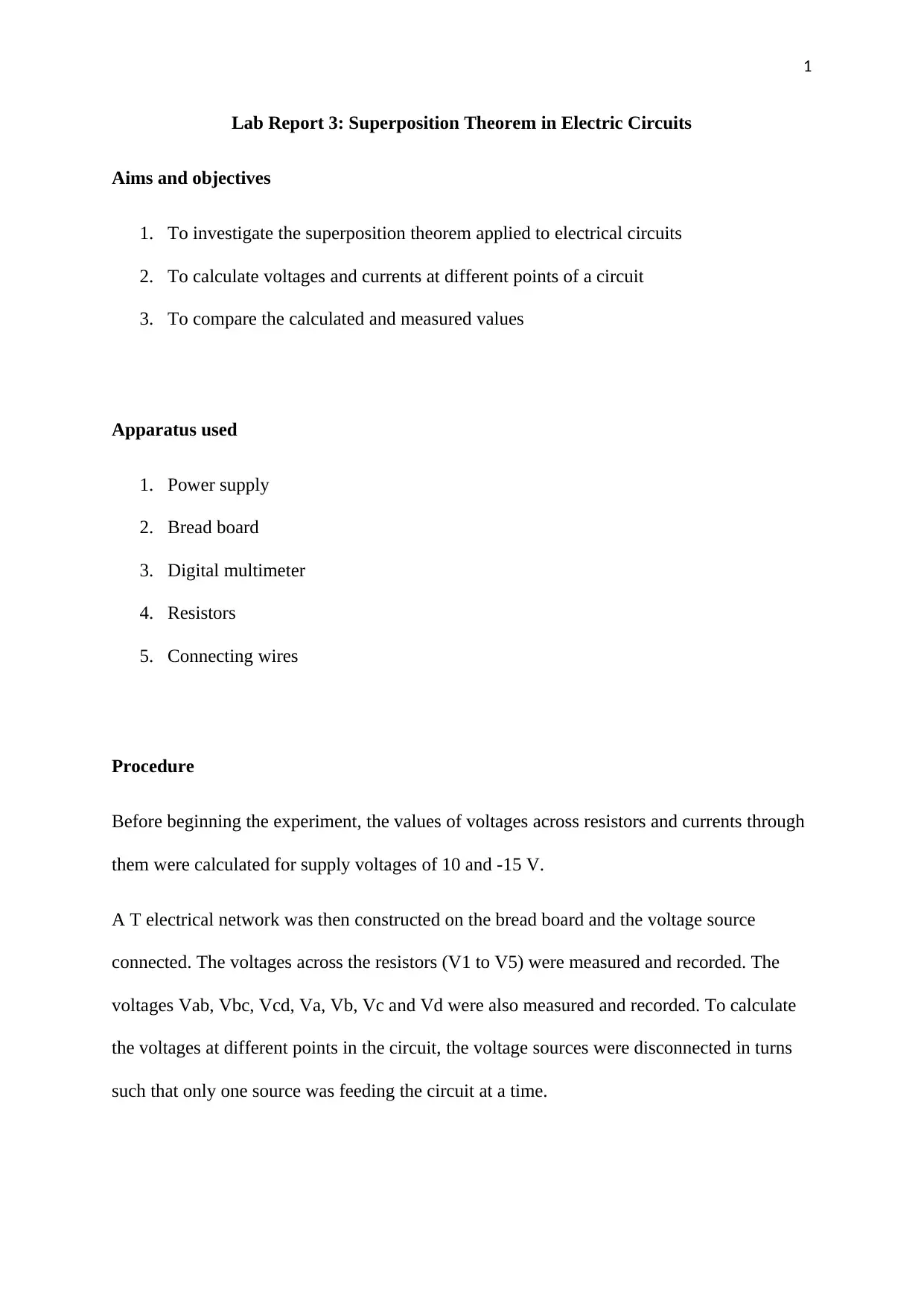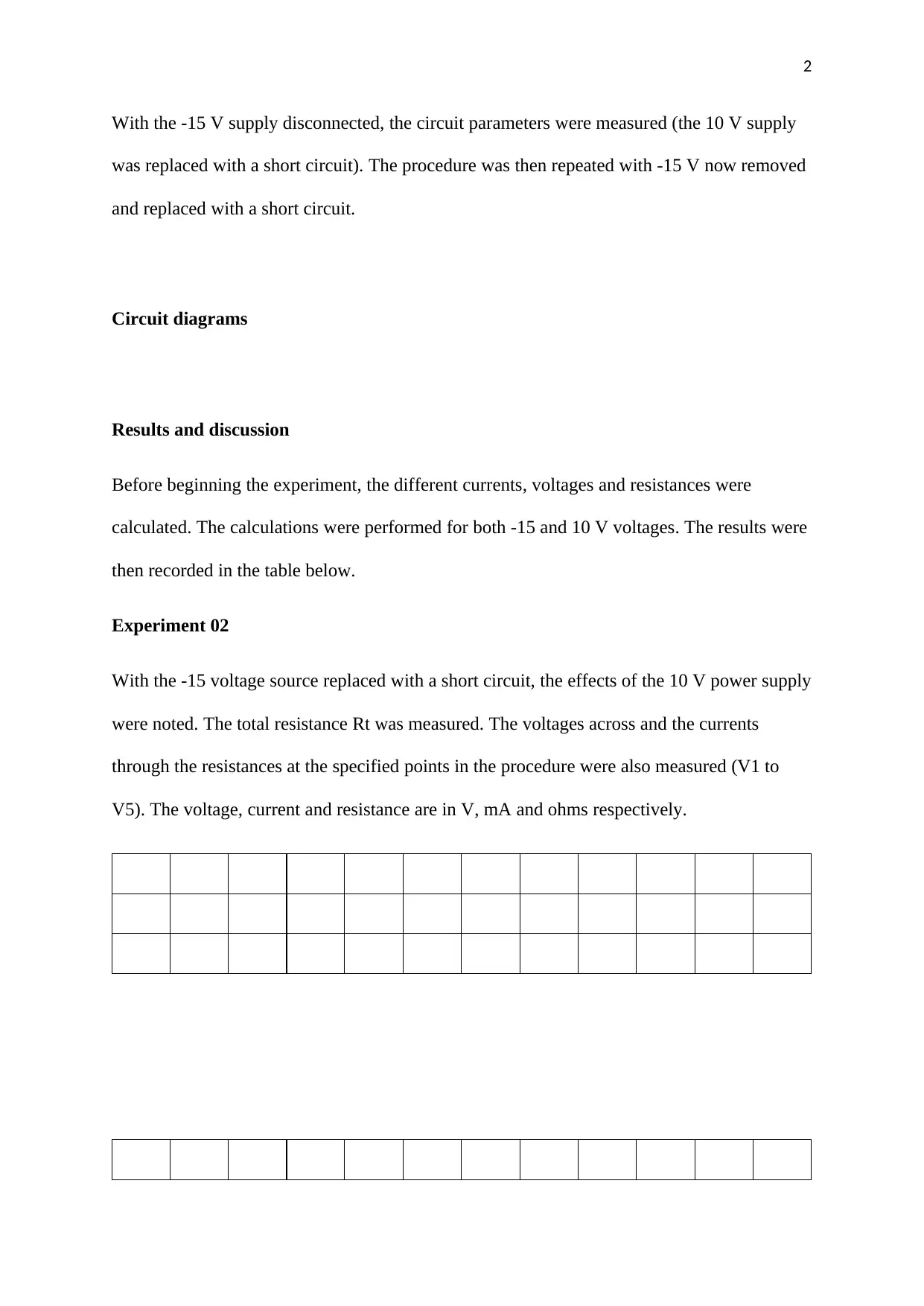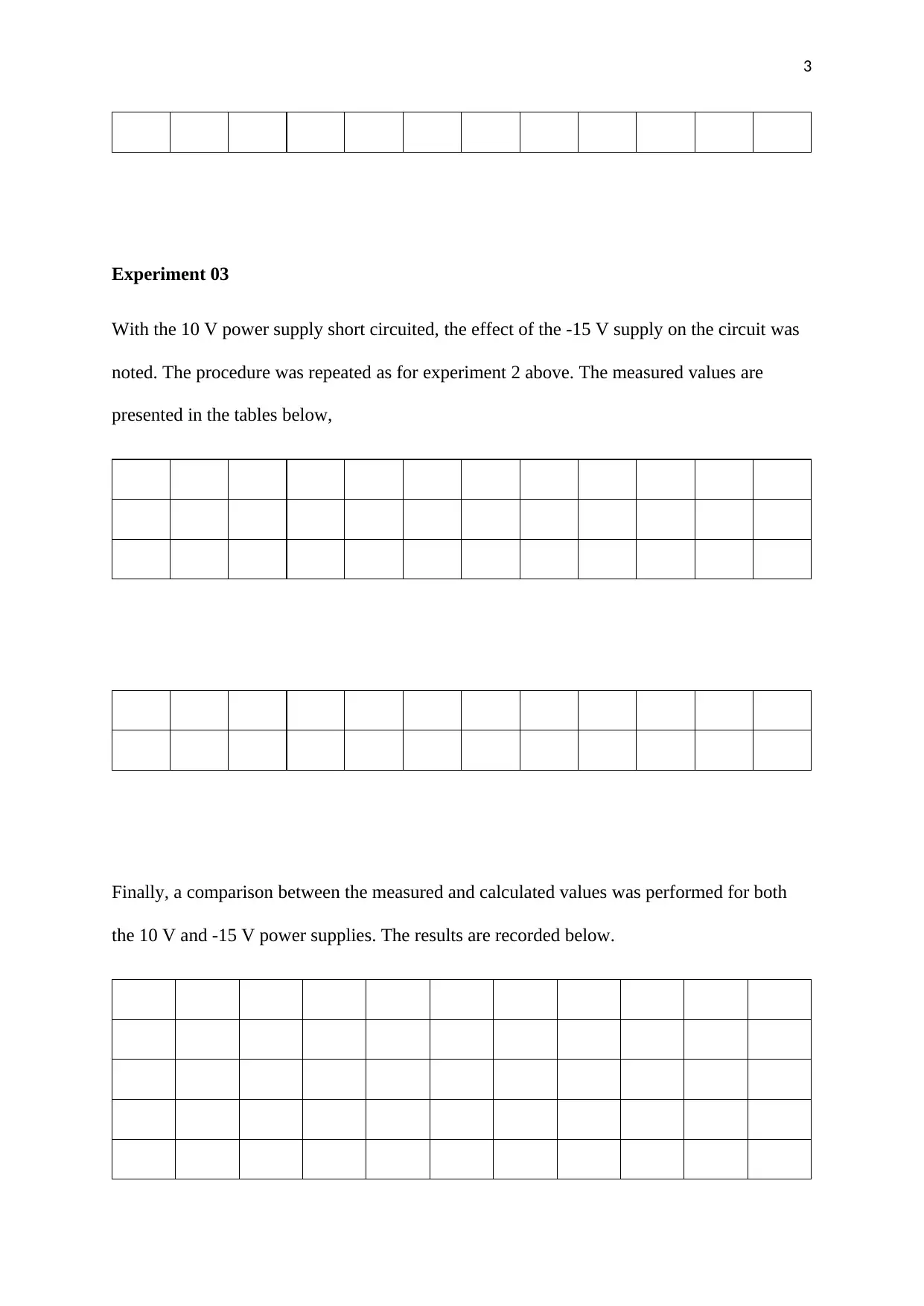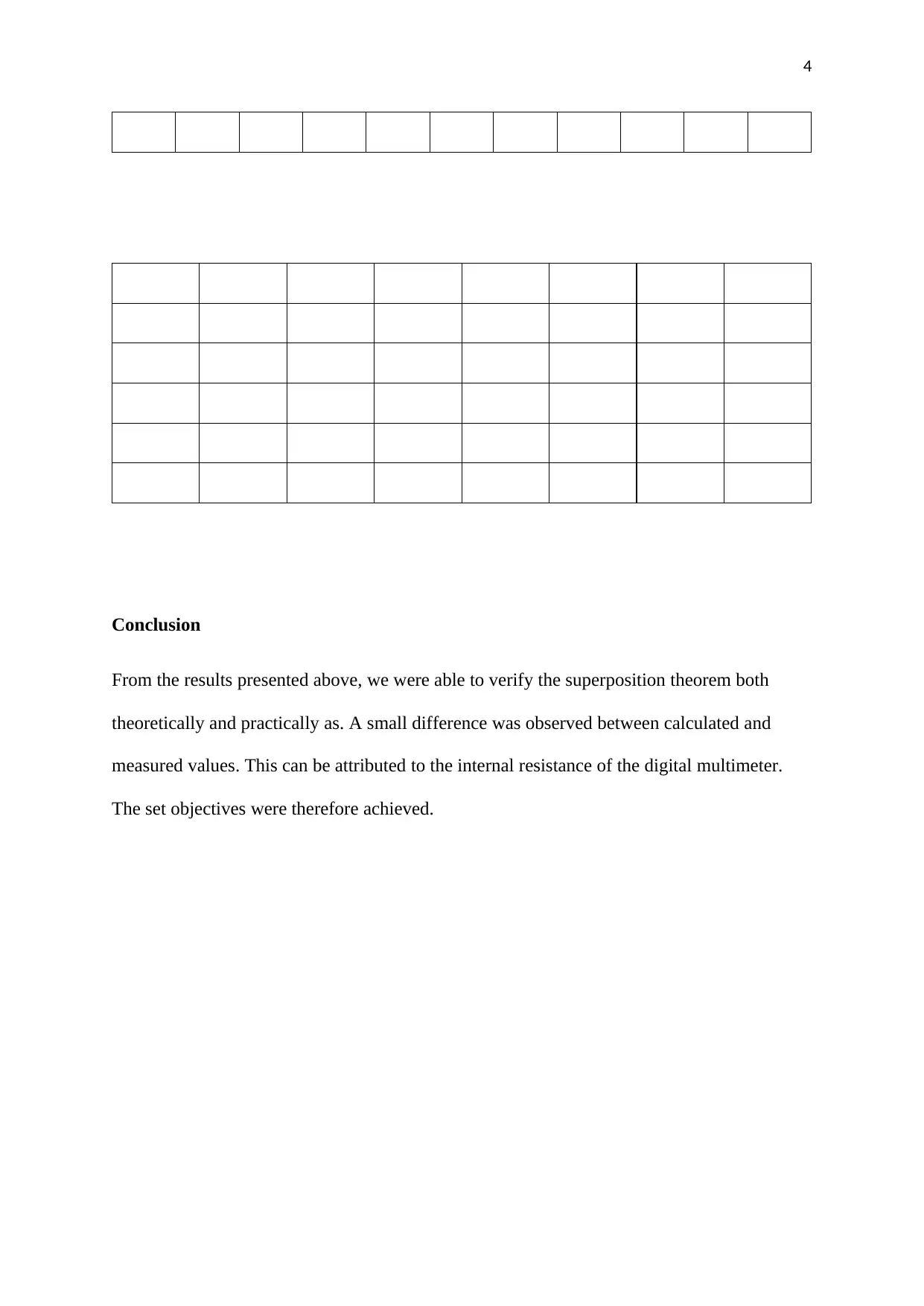University Lab Report: Superposition Theorem in Electrical Circuits
VerifiedAdded on 2022/10/16
|4
|441
|35
Report
AI Summary
This lab report investigates the superposition theorem in electrical circuits. The experiment involved constructing a T electrical network and measuring voltages and currents under different conditions. The report details the procedure, including measurements with and without voltage sources. Calculations were performed to determine theoretical values, which were then compared with the experimental results. The study aims to verify the superposition theorem both theoretically and practically, accounting for potential discrepancies due to the digital multimeter's internal resistance. The report includes tables of measured and calculated values, providing a comprehensive analysis of the circuit behavior. The objectives of the lab were successfully achieved by demonstrating the validity of the superposition theorem.
1 out of 4











![[object Object]](/_next/static/media/star-bottom.7253800d.svg)